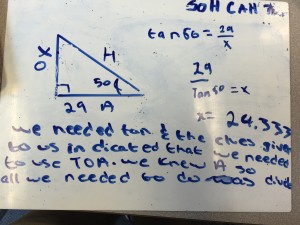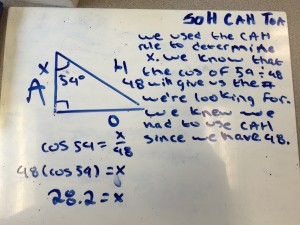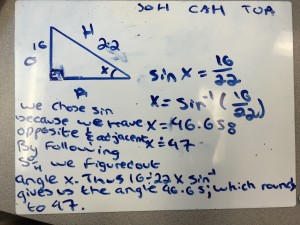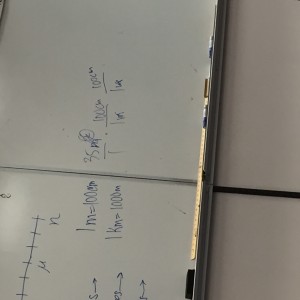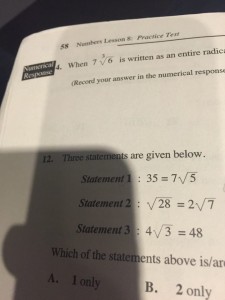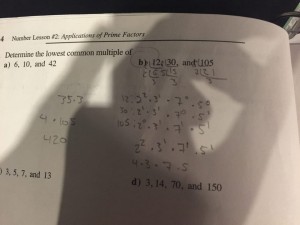


Category Archives: Grade 10
Week 9, Math Burton
What I learned this week:
I learned two interesting things this week, the first one was that an equation that repeats itself with the same numbers is really just a square in disguise. Example: (X +4)(X + 4). Usually you would use FOIL to figure out the answer, redistributing and multiplying every number. OR you can think of it as (X + 4)^2, you can cut one step out as well to find the middle number. Multiply 4*X*2.
Second thing I learned (X + 5) (X + 3) usually you distribute everything, or you can square the X (since you know you’d do that anyways), add the two numbers together (add x) and lastly, multiply the two numbers.
This: X*X + X*3 + 5*X + 5*3
becomes
X^2 + 8X + 15
Week 8, what I learned
I learned how to properly use the distributive property, it wasn’t one question in particular. Rather, I missed a day if school and various friends taught me what I missed with tri-nominal and how to distribute.
Triangles
Week Before Last Week Tonight
 What I learned in math, Week 6:
What I learned in math, Week 6:
The side of the triangle with the smallest side will be on the opposite side of the smaller angle. The biggest angle will be 90°, so that angle can’t be it. Meaning that the smallest angle is against side “C”, one end is the smallest side and the other end is the smallest angle.
My ah ha moment
Exponent Law Summary
Week 2 -Math 10
Weekly Reflection
“Ah Ha” moment:
“Determine the lowest common multiple of: 12, 30 and 105”
At first I didn’t understand how to do this, as 12 doesn’t have 5 or 7 as multiples, 30 doesn’t have 7 as a multiple & 105 doesn’t have 2 as a multiple. It wasn’t until I realized that you had to multiple the biggest multiples in each number together, regardless of whether or not each number shares a multiple with another.
The Number 30503055
Factors: 1081
Fact: It has 5 distinct prime factors
The number represents the tablature for a song

